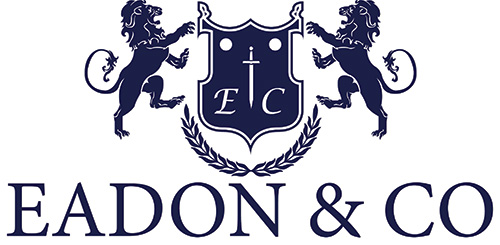Junior Individual Savings Accounts – often shortened to Junior ISAs, or JISAs – are a popular vehicle for parents and guardians to save money for their children’s future.
Like regular ISAs, the key advantage of these accounts is that they allow you to invest money without paying tax on any interest or capital gains.
This makes them ideal for building up a pot of funds on behalf of a minor whilst they’re still young, taking advantage of the tax benefits on offer whilst getting them started on the habit of responsible saving from an early age.
Junior ISAs: How do they work?
Brought in by the UK government in 2011 as a replacement for the early Child Trust Fund (CTF) scheme, Junior ISAs are designed to help those under 18 years of age get a financial head start in life.
Once an adult sets up a Junior ISA on a child’s behalf, anyone can contribute to the account up to the annual limit – which is currently set at £9,000 per year – allowing other close friends and family to also store funds away for the child if they wish. Investments are then able to grow free from UK income and capital gains tax.
There are two types of Junior ISAs: Cash Junior ISAs and Stocks & Shares Junior ISAs.
A child is entitled to have both types of account in their name – but if they have more than one, the annual contribution cap covers both pots. In other words, you’re only able to deposit up to £9,000 in total across all of that child’s accounts, so you’d have to choose how to divide up the annual allowance.
And crucially, all funds in a Junior ISA are stored away until the child turns 18, so they’re not able to touch it while they’re still a child.
The convenient thing is, though, that the account automatically converts into a standard ISA as soon as they become an adult, granting them the same rights over the funds they’d have if they’d invested the money themselves.
Cash vs Stocks & Shares: Which is right for you?
Cash Junior ISA
Cash Junior ISAs function similarly to keeping your funds in a bank account, except you don’t have to pay taxes on the interest.
For this reason, and the fact they’re shielded from market fluctuations, they’re seen as a secure, low-risk way to save money where the initial capital you put in is guaranteed to remain intact.
Pros:
- Low risk, as the capital is protected.
- All interest earned is tax-free.
- Easy to understand and manage.
Cons:
- Generally lower returns than Stocks & Shares Junior ISAs.
- Interest rates may not keep pace with inflation, which could erode the purchasing power of the savings you’ve made over time.
Stocks & Shares Junior ISA
Stocks & Shares Junior ISAs allow your money to be invested in a wide range of assets – including stocks, bonds, and mutual funds.
These types of ISA have the potential for higher returns compared to Cash Junior ISAs, although they’re higher risk as you’re essentially betting on the performance of the funds your money is held in.
As a result, the value of investments can fluctuate depending on market conditions, so capital can go up or down.
Pros:
- Potential for higher returns, especially when investing over the long term.
- Wide range of investment options and diversification.
Cons:
- Higher risk as your investments go up and down with the market.
- Returns are not guaranteed and there’s a risk of losing capital.
What are the rules?
Who’s eligible? – Any child living in the UK who doesn’t already have a Child Trust Fund can have a Junior ISA. Only a legal parent or guardian can set the account up for them, but once it’s open anyone can contribute to it.
What’s the contribution limit? – The maximum contribution cap for any given tax year is currently £9,000. This limit can either be fully allocated to one account or, if the child has both type of account in their name, be split between a Cash Junior ISA and a Stocks & Shares Junior ISA.
Can the child access their funds? – While the child technically owns the money in their Junior ISA, they can’t access any of it until they’re 18 – at which point, they’re instantly given control over the funds in their newly converted adult ISA.
What are the tax benefits? – As with standard ISAs, investments in Junior ISAs are ringfenced from any income capital gains tax, so they’re ideal for long-term saving.
Are they transferable? – Parents can move the funds in a Junior ISA between different providers (or between Cash and Stocks & Shares ISA accounts), but they can’t convert between Junior ISAs and other types of ISAs.
Why is early investment so important?
The potential benefits of putting money aside for your child’s future are almost limitless. It could give them a vital financial cushion for future expenses like education, help them celebrate significant life events such as a wedding or gift them a deposit for their first home.
This final point is increasingly important in today’s housing market: in recent years, the logistical challenges of saving for a deposit are often the largest barrier to young people getting on the property ladder.
Eadon & Co Director, Tim Eadon, notes: “With wages growing frustratingly slowly in many sectors whilst rent and housing prices continue to rise, it’s no surprise today’s ‘generation rent’ are struggling to make the leap to home ownership on their own.
“That’s why we’d always advise that parents who can afford to do so begin saving for their child as soon as they can: even a hundred pounds a month can amount to a lifechanging sum when done consistently.”
Indeed, thanks to the magic of compound interest, getting the ball rolling with their investment fund while they’re young can help even modest contributions grow significantly by the time they turn 18.
What’s more, raising a child’s awareness of the importance of regular saving often helps instil financial awareness and a sense of responsibility that carries through into later life.
So, not only does early investment help give them an indispensable head start in early adulthood, but fostering a healthy attitude towards money management sets them up to make the best possible financial decisions into adulthood and beyond.
Note:
The price and value of any investments and any income from them can fluctuate and may fall, so you may get back less than the amount you invested. Rules for Lifetime ISAs may differ.
This information is for education purposes only – it does not constitute financial advice and should not be acted upon without taking professional advice.
If you’re looking to get started investing for your child’s future with a Junior ISA, get in touch below for a no-obligation introductory chat with our financial experts.

